Assets Software to manage your Assets Depreciations
September 9, 2020 9:51 am | by John Adams

Our Assets Software functionality is integrated into all other modes, which enables users of SapphireOne to easily keep track of its company’s assets and their depreciations.
Entering new data in the equivalent Mode of the Assets Software creates a number of transaction types that can also link through to the financials mode:
There are two groups that Transactions in our Assets Software can be divided into:
Transactions which are transferred to Financials as a GJ, VI or MP:
- DGJ – Depreciation General Journal
- PGJ – Purchase General Journal
- SGJ – Disposal Sale General Journal
- VGJ – Revaluation General Journal
- RGJ – Reverse Sale General Journal
Transactions which are retained within Assets:
- DNT – Depreciation Note
- DLN – Depreciation Loan
- DSR – Depreciation Service
- DRP – Depreciation Repair
- DCO – Depreciation Company
The Assets Software is based on two principles:
Assets Depreciations
This is the calculation of multiple depreciation schedules in relation to the company assets. Only one depreciation schedule may be transferred to the General Ledger. This covers the ATO Standard, plus the Company required value. For example: Your company may wish to retain a record of the WDV tax value, plus the potential WDV sale value. We suggest that only the transactions relating to the ATO Standard are transferred to SapphireOne, while the company transactions are kept within Assets in order to give a true reflection of the assets worth.
Asset Control
The Assets of your company can be purchased, sold and controlled with ease in SapphireOne. It includes the ability to record locations of assets and the specific staff responsible for each. Further, you can keep a record of all asset details, including the warranty period, any repairs that were done and loans that were taken. This enables the tracking of the life of any asset in the company.
If you would like to find out more on how to manage and control your Assets Depreciations etc. with our Assets Software, have a look at our website.
HR Software with Payroll functionality
August 28, 2020 11:31 am | by John Adams
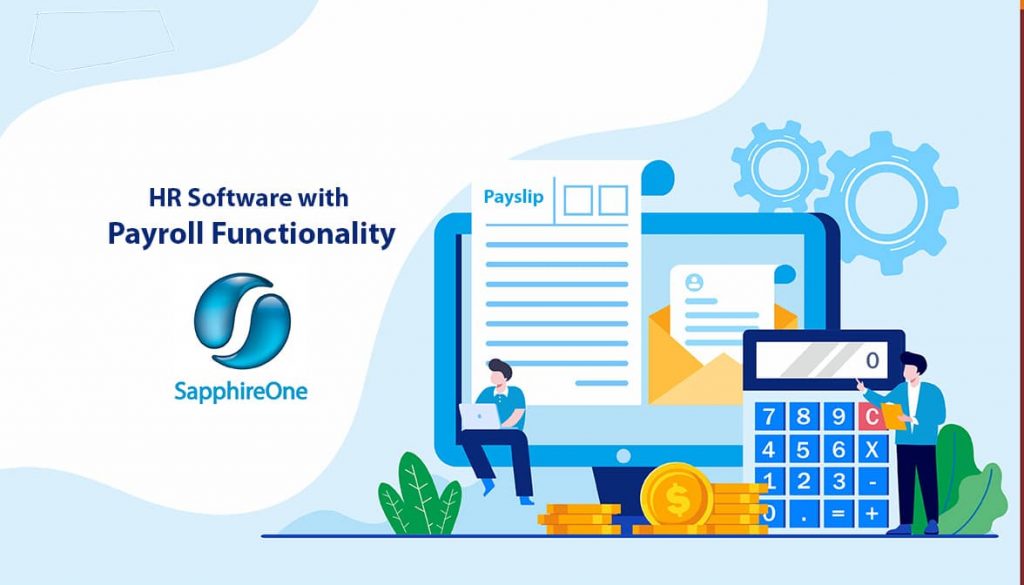
SapphireOne offers an integrated HR software which includes a Payroll functionality enabling any HR team to easily and efficiently process their payrolls and pay employees.
The HR Software component of the entire programme is designed to complement the Financials Mode. If you already use Financials, you will experience that Payroll operates with all the same standards and methods, including the layout of the reports etc. As it is an integrated HR software, the transfer of data from the Payroll functionality to other required areas of the Financials Menu takes place automatically.
SapphireOne Payroll provides a normal Pay Run during each financial period, with all default details set up to go. A Pay Run can be as short as a week, a fortnight, or a month. When necessary, this ‘ready to go’ condition can be quickly altered, either permanently, or temporarily for that Pay Run, without affecting any subsequent Pay Runs. In this way, many easy to use features are available together with quick-change areas for use when required.
The five menus of the Payroll functionality within the HR software are outlined below:
1) Payroll:
- Access to all regular data activities required during a Pay Run.
- Permanent & Temporary alterations to employee records.
- Set up & execute a Payrun.
- Management of Superannuation settings.
- Functions to assist in executing Pay Runs.
2) Reports:
- Access to all reports before during and after a Pay Run.
- Transaction Reports.
- PAYG Payment Summaries.
- Reconciliation Reports.
3) Administration:
- Main setup area for Payroll.
- Create and Maintain different items e.g. Employee, Job Projects, Tax Scales etc.
- Payroll Reports.
4) Roster:
- Shortcut to Location Inquiry
- Roster Scheduler Tool
5) History:
- Inquire about various historical information.
- Print reports on historical information
- Estimate leave liabilities for entry to the General Ledger
Have a look at our other blogs in which we regularly release instructions, information and updates that are relevant for an HR software offering a Payroll functionality.
Data File Maintenance on your ERP Accounting Software
August 26, 2020 10:28 am | by John Adams
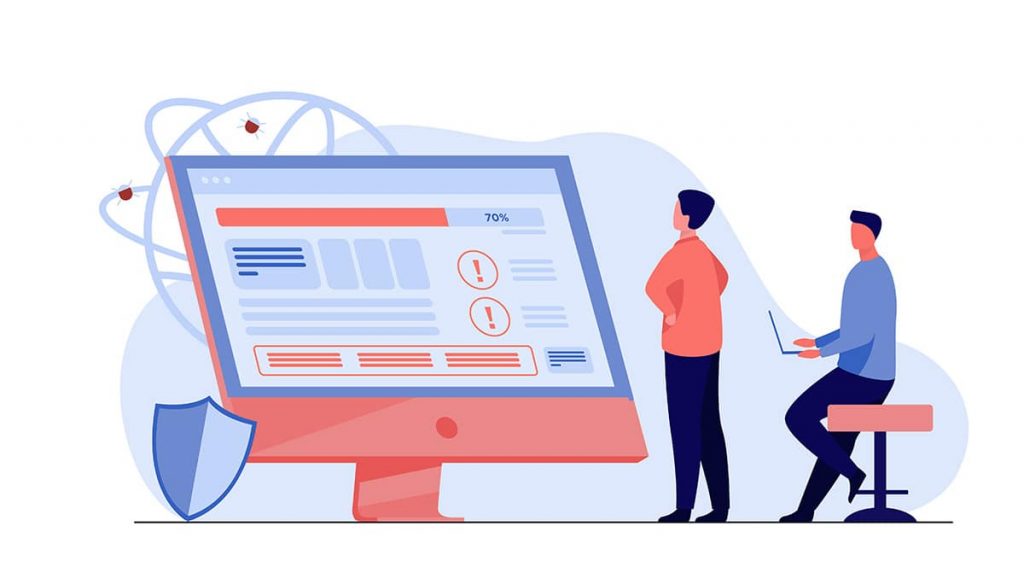
All data files have indexes which function in essentially the same way as an index in an encyclopedia does. Over time, these can become damaged due to external factors. The result can be that reports are missing data or that information on specific transactions is missorted. If you are experiencing similar issues on your SapphireOne ERP Accounting Software live data file, please follow the instructions below:
I) Re-Indexing of the Live Data File
The first thing you should do is run a re-index of your data file:
- All users need to quit their SapphireOne Client Application and the SapphireOne Server needs to be shut down.
- Now locate your Live Data File folder. This is usually found under the following file path:
- MacOS: Applications > SapphireOne > Live
- Windows: Program Files > SapphireOne > Live
- Delete the filewith the extension .4DIndx from the folder.
 Make sure that you do not delete any of the other files, especially not the .4DDfile as this contains your live data.
Make sure that you do not delete any of the other files, especially not the .4DDfile as this contains your live data. - Re-start the Server and the software will automatically re-build the index file.
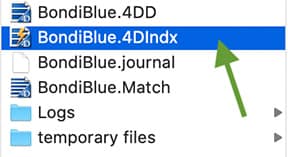

 If your data file is very large, this will take a considerable amount of time to complete. Do not try to run up your Client until this process is finished.
If your data file is very large, this will take a considerable amount of time to complete. Do not try to run up your Client until this process is finished.
What does the Re-Index do?
Records in the SapphireOne database are indexed for performance reasons and to allow quick accessibility. Due to external reasons that are beyond the control of the software provider, indexes sometimes can become damaged. The result is that they do not function in their intended manner anymore.
II) Run Verify on the SapphireOne Server
If re-indexing did not rectify the issue, you can then verify the records and indexes via the server:
- All users need to quit their SapphireOne Client Application and the SapphireOne Server needs to be shut down.
- Now go to the Maintenance Security Center in the server (via the Help option in the toolbar):

Click on the “Verify the records and indexes” button. - Once the verification is done, the result will show either:
- A tick showing that the data file verification was successful, or
- A red cross showing the data file is damaged (follow the next step then).
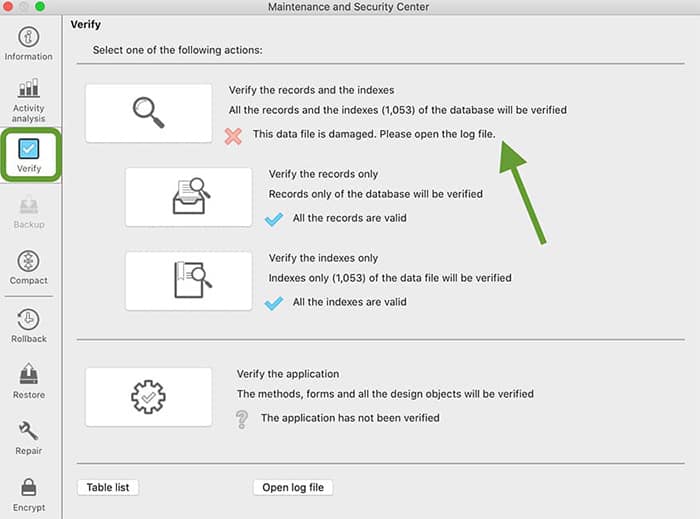
If the verify tool shows that your data file is damaged, you can do a standard repair of your data file via the server:
- All users need to quit their SapphireOne Client Application and the SapphireOne Server needs to be shut down.
- In the Maintenance and Security Center:
- Select Standard Repair, and
- Click on the “Repair” button

- Once the repair is done, the result will show either:
- That the repair of the data file was successful, or
- That the data file is still damaged. If this is the case, please contact SapphireOne Support.
Job Management Software within SapphireOne ERP
August 18, 2020 10:57 am | by John Adams

The Job Management Software functionality of SapphireOne enables the managing of job projects, cost budgeting, resource planning and the creation of Gantt Charts all-in-one.
Data Entry in the Project Mode of our Job Management Software creates various transactions types which are indicated by a three-letter code.
The first letter stands for the origin of the transaction, in this case J for Job Projects.
The second letter further clarifies the origin, such as M = Monetary, C = Clients, G = General Ledger and V = Vendor.
The third letter represents the nature of the transaction i.e. R = Receipt, F = Refund, I = Invoice, C = Credit Memo, J = Journal, P = Payments.
For example,
- Job Client Invoice (JCI)
- Job Credit Memo (JCC)
- Job General Ledger Journal (JGJ)
Once a transaction is posted in our Job Management Software, it flows through to the Accounts Mode and finally appears in the Receivables Transactions Inquiry Window. For instance, a Job Client Invoice is now a standard Client Invoice.

The Job Project functionality creates its own set of General Ledger Accounts which are specific to the particular Project ID and GL account used. The GL account is created the first time an amount is allocated to the particular project.
- Job Costs
- Job Projects
- Job Inventory
- Job Resources
It involves the data entry, allocation and posting of Job Vendor Invoices, Job Project Purchases etc.
It allows for the tracking and allocation of resources to particular jobs, either by using an individual resource or project.
It is used to allocate inventory items to a specific Project for future use.
It enables the invoicing of goods and services and the direct allocation of such to a specific project.
For more information on how to manage job projects, undertake cost budgeting, resource planning and the creation of Gantt Charts with our Job Management software, please visit our website.
Stocktake Entry for Logistics, Distribution and Inventory Management Software
August 14, 2020 12:46 pm | by John Adams
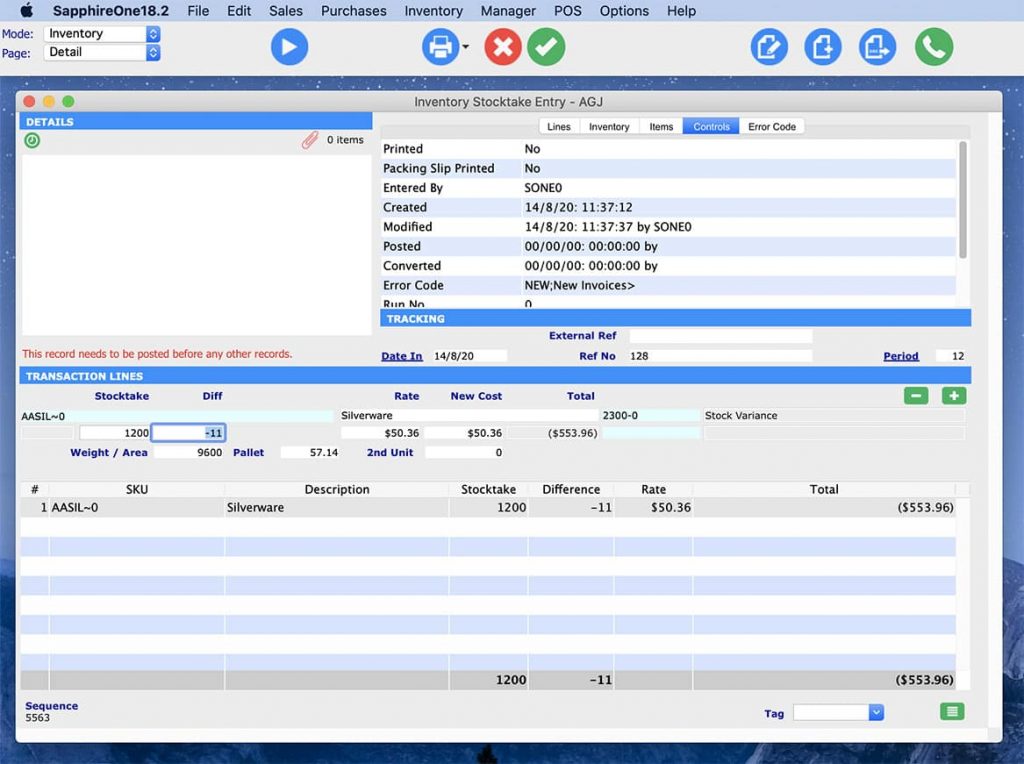
The Inventory menu is the main area of activity for entering transactions for the adjustment, transfer or building of an inventory item. These transactions are then processed through to Inventory Mode and Accounts Mode updating the Inventory and General Ledger files.
- The Data Entry functions enable you to enter your data for this mode into SapphireOne, such as Stocktake Entry
- The Inquiry Functions allow for the viewing of a many different Inquiries.
- The Post Transactionsfunction allows the posting of Inventory adjustment transactions.
- The Reportssection allows detailed analysis of the Inventory file and the production of transaction reports.
- AGJ) Adjustment General Ledger = This Stocktake Adjustment invoice is created when an adjustment is made to the current stock.
- (TGJ) Transfer General Ledger = A Transfer Journal allows the transfer of stock from one department to another.
- (OGJ) Order General Ledger = A pre-build Journal is created when an item is pre-built.
- (BGJ) Build General Ledger = A Build Journal is the transaction that is produced when a built item is created from a number of line items.
- If the Stocktake Entry involves negative stock, there is no cost change.
- Any Inventory stock that has its Type set as Hire is treated differently to all other stock during Stocktake Entry. These items will also not be displayed in any Sales or Purchase lists. Once the stock has been purchased as a normal Inventory item this Stock Entry function is used to transfer normal stock into the Hire Stock.
- Manually click on any line in order to fully allocate it OR
- Right click on any line to partially allocate it [>] Opens an Allocation Amounts Window OR
- Select from the “Apply To” drop-down for an automatic allocation of all transactions in the Allocation Lines
- 1. Manually click on any line that has already been allocated to fully unallocated it OR
- 2. Right click on any line to partially unallocate it [>] Opens an Allocation Amounts Window OR

Transaction Types and their Codes:
Stocktake Entry
The Stocktake Entry function for entering data has been designed for the adjustment of stock levels and/or actual costs per unit. The Stocktake Entry screen allows control of the stock and automatic entry of the opposing adjustments within the General Ledger. The General Ledger account is the Debit or Credit side to be adjusted against the Inventory Asset Account.
Important Information on Stocktake Entry
Tutorial Series: Accounts Receivables Allocations Inquiry
August 5, 2020 8:42 am | by John Adams

Allocations Inquiry is similar to Transactions Inquiry. However, it does not display all current transactions but only those that have not yet been fully allocated.
Whenever a transaction is created, the system determines automatically whether an allocation has to be made. In the Allocations Inquiry window, the transactions are displayed according to the Client for whom the Transaction has been created.
The main purpose of this Allocations Inquiry window is to be able to allocate any Receivables Transactions for which payments have now been made but have not been allocated, for example a Client Receipt can be allocated from here against the appropriate Invoices.
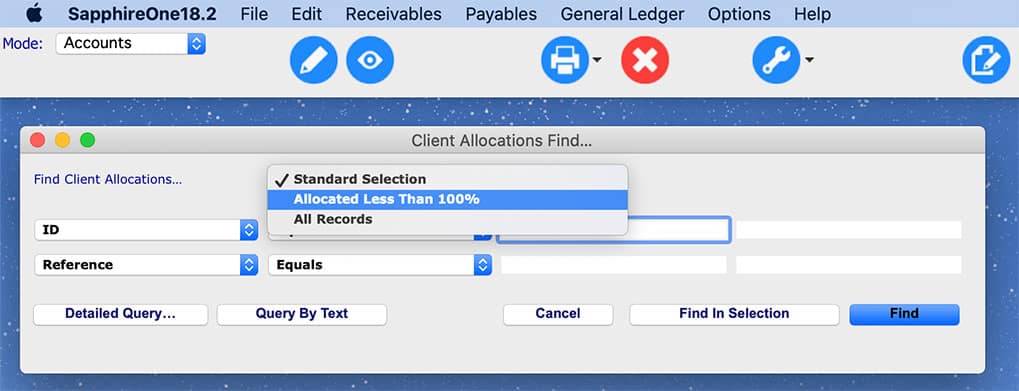
From here you can also unallocate transactions in order to be able to delete or re-allocate. However, you can only delete transactions as long as they are still unposted. Once a transaction has been posted, it cannot be deleted anymore, but note that it can still be allocated or unallocated.
Open Item Clients Window
Here you can allocate selected Client Receipts or Client Credits to any other transactions for the selected Client.
Here you can allocate selected Client Receipts or Client Credits to any other transactions for the selected Client.
To unallocate a transaction either:
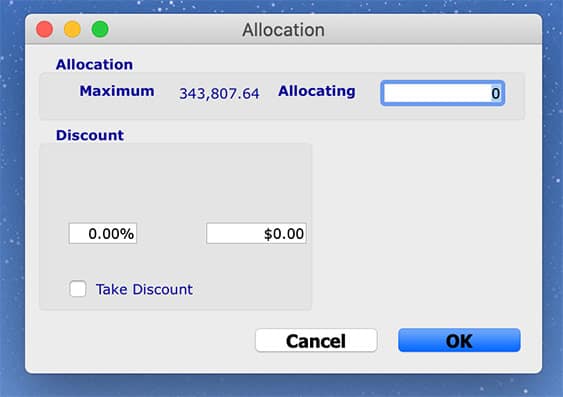
SapphireOne covers ERP, CRM, DMS and Business Accounting is an all-in-one integrated software solution. If you would like to find out more about our Accounts Receivables Allocations Inquiry and Transactions Inquiry, request a live demo with us here.
